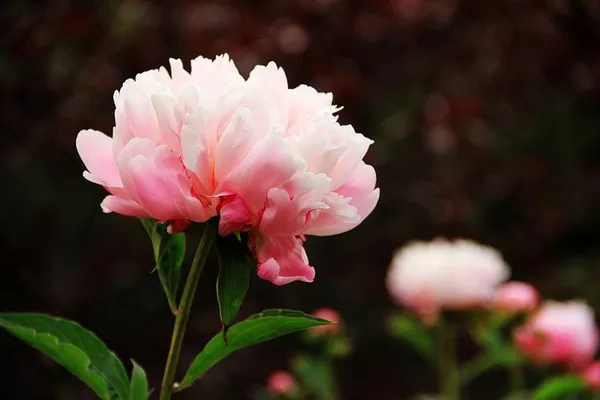Peonies, with their extravagant blooms and captivating fragrance, have long been cherished as one of the most beloved ornamental flowers in gardens worldwide. Cultivating these exquisite plants requires patience, attention to detail, and a bit of horticultural finesse. Whether you’re a seasoned gardener or a novice enthusiast, this comprehensive guide will walk you through everything you need to know about growing peonies, from selecting the right varieties to nurturing them through each season.
Choosing the Right Peony Varieties
The first step in growing peonies begins with selecting the right varieties for your garden. Peonies come in three main types: herbaceous, tree, and intersectional (also known as Itoh hybrids). Each type offers unique characteristics in terms of bloom time, flower form, and growth habit. Herbaceous peonies are the most common and diverse, with a wide range of colors and flower forms, while tree peonies boast woody stems and large, often fragrant blooms. Intersectional peonies combine the best features of both herbaceous and tree peonies, with sturdy stems and a prolonged blooming period.
When choosing peony varieties, consider factors such as your climate zone, available space, and desired bloom time. Consulting with local nurseries or gardening experts can provide valuable insights into which varieties thrive best in your specific area.
Preparing the Planting Site
Peonies thrive in well-drained soil and prefer a location with full sun to partial shade. Before planting, prepare the soil by incorporating organic matter such as compost or well-aged manure. This improves soil structure, fertility, and drainage—key factors in promoting healthy peony growth.
Choose a planting site where peonies will receive at least 6-8 hours of sunlight daily. Avoid areas prone to waterlogging, as excessive moisture can lead to root rot and other fungal diseases. Proper site selection and soil preparation lay the foundation for robust peony plants that will flourish for years to come.
Planting Peonies: Step-by-Step Guide
Plant peonies in early fall, ideally in September or October, to allow roots to establish before winter. Follow these steps for successful planting:
Digging the Hole: Dig a hole approximately 2 feet wide and 2 feet deep. Ensure the planting hole is large enough to accommodate the peony roots without bending or crowding.
Amending the Soil: Mix in compost or aged manure with the excavated soil to enrich fertility and improve drainage.
Planting Depth: Position the peony root division (or bare root) in the center of the hole, making sure the eyes (buds) are no deeper than 2 inches below the soil surface. Planting too deep can result in poor flowering.
Backfilling: Gently fill the hole with amended soil, firming it around the roots to eliminate air pockets. Water thoroughly after planting to settle the soil.
Mulching: Apply a layer of mulch, such as shredded bark or compost, around the base of the plant to conserve moisture and suppress weeds.
SEE ALSO: A Step-by-Step Guide to Making Paper Peony Flowers
Caring for Peonies Throughout the Seasons
Once established, peonies require minimal maintenance but benefit from regular care to ensure healthy growth and abundant blooms. Here’s how to care for peonies throughout the seasons:
1. Spring:
Fertilization: Apply a balanced fertilizer, such as 10-10-10, in early spring before new growth appears. Avoid high-nitrogen fertilizers, as they can promote lush foliage at the expense of flowers.
Support: Install peony supports or cages around plants as they emerge to support heavy blooms and prevent stems from bending or breaking.
2. Summer:
Watering: Water deeply during dry spells, providing approximately 1 inch of water per week. Avoid overhead watering, as wet foliage can increase susceptibility to diseases.
Deadheading: Remove spent flowers promptly to encourage additional blooms and prevent seed formation, which can divert energy from root and foliage growth.
3. Fall:
Cutting Back: After the first frost, cut back herbaceous peony foliage to ground level and dispose of debris to minimize overwintering pests and diseases.
Dividing: Every 4-5 years, divide overcrowded peony clumps in early fall to rejuvenate plants and improve flowering. Dig up the entire clump, gently separate sections with a sharp knife, and replant divisions following the same planting guidelines.
4. Winter:
Mulching: Apply a 2-3 inch layer of mulch over peony beds in late fall to protect roots from freezing temperatures and fluctuating winter conditions.
Protection: In regions with severe winters, consider providing additional insulation by covering peony crowns with a layer of pine boughs or straw.
Pest and Disease Management
While generally resilient, peonies can be susceptible to certain pests and diseases. Common issues include:
Botrytis Blight: This fungal disease causes dark spots on leaves and stems, often exacerbated by cool, wet conditions. Improve air circulation around plants and remove affected foliage promptly.
Verticillium Wilt: A soil-borne fungus that causes wilting and yellowing of leaves. Plant peonies in well-drained soil and avoid overcrowding to reduce the risk of infection.
Peony Ants: Although they are attracted to peony buds, ants do not harm the plants and are merely feeding on nectar secretions. If their presence bothers you, gently rinse buds with water before bringing them indoors for arrangements.
Conclusion
Growing peonies is a rewarding endeavor that offers years of breathtaking blooms and garden beauty. By selecting the right varieties, preparing the planting site, and providing proper care throughout the seasons, you can cultivate healthy peony plants that thrive and multiply over time. Whether adorning a flower bed, border, or cut flower arrangement, peonies bring a touch of elegance and charm to any garden landscape. With patience and attention to detail, you too can master the art of growing these timeless favorites in your own garden sanctuary.


